Summary of key points
Community Building : Sign has built a thriving "Orange Dynasty" community through cultural symbols (orange theme and "SignGlasses"), a fair incentive system based on Soul Binding Tokens (SBT), and continuous interaction. This group of more than 50,000 members has formed a strong support force.
Fundamentals : Sign generated $15 million in revenue in 2024 through its token distribution platform TokenTable, which has processed over $4 billion in token airdrops. The company has raised a total of $28 million, with investors including YZi Labs and Sequoia Capital.
Vision : Sign is expanding from TokenTable to Sign Protocol, a blockchain-based authentication system. The system aims to solve problems such as witch attacks, while creating a programmable trust infrastructure that can be implemented in real-world scenarios such as RWA, CBDC, and government cooperation.
1. Community power in the Web3 industry
Community plays a central role in brand building. It gives members a sense of identity and belonging, creating emotional bonds that strengthen loyalty. This connection not only drives organic growth for brands, but also provides resilience support in times of crisis.
Community building is not a new concept—traditional industries have long had practical examples. Lululemon achieved global expansion by cultivating a fitness community of 13 million members, with users spontaneously spreading brand value in various markets. When Harley-Davidson faced fierce competition from Japanese motorcycle brands in the 1980s, it successfully survived the business crisis by forming the Harley Owners Group (HOG), a fanatical fan community.
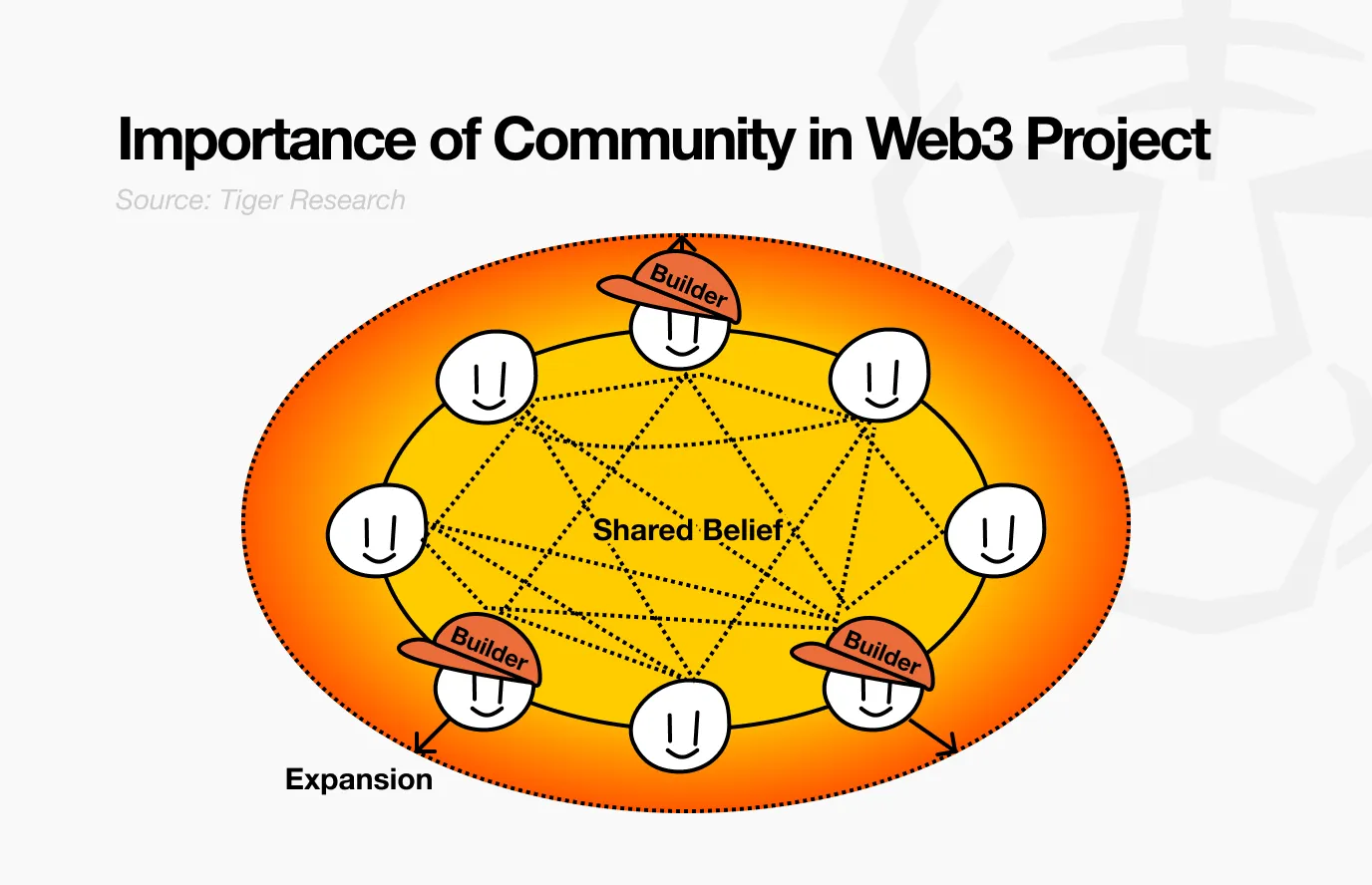
In the Web3 field, the role of the community is even more prominent . This culture-centered, collaborative ecosystem unites participants through shared beliefs rather than centralized authority. Community members are not only consumers, but also often participate as voluntary contributors and builders, making the community a key factor in the success or failure of a project.
Academic research confirms this view. Gartner & Moro (2024) analyzed data from 3,644 ICO projects and found that the number of social media followers on platforms such as Twitter and Telegram was strongly correlated with the achievement rate of fundraising goals.
In contrast, traditional professional indicators such as the education and experience of the management team have little impact on the success rate. This shows that in the Web3 ecosystem, community support is a better predictor of success than traditional qualifications - projects with high network exposure and active community support are more likely to achieve investment goals and maintain long-term growth.
2. Community building: the secret to the rise of the Orange Dynasty
Although many Web3 projects emphasize community in theory, few have succeeded in practice. Most projects focus on initial incentives or large-scale events, but fail to create a cultural system that participants truly identify with.
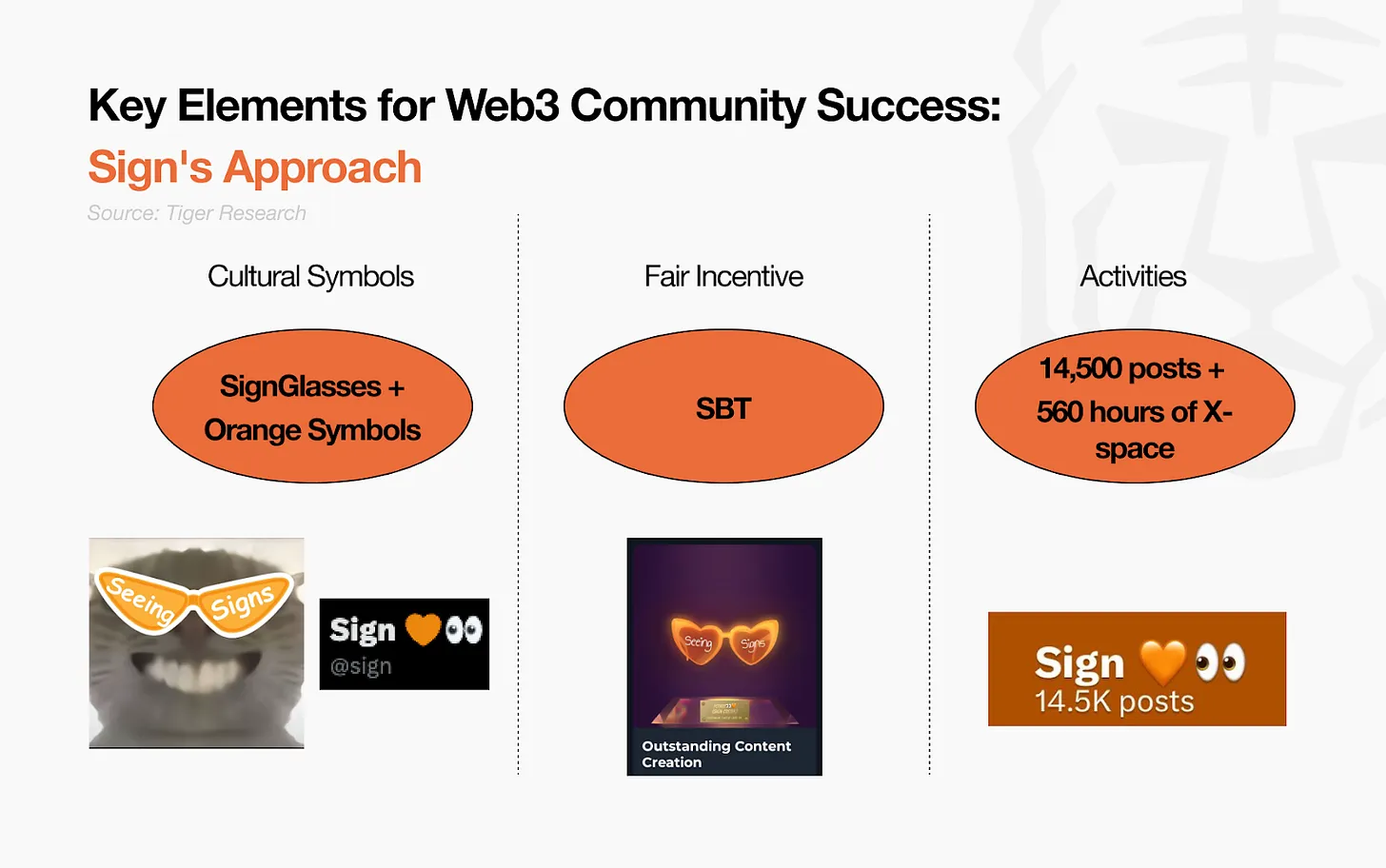
Building a sustainable Web3 community requires three elements:
Cultural symbols that build identity
A fair system that incentivizes participation
Maintaining continuous interaction
When these elements come together, a true community emerges. Sign’s Orange Dynasty is a perfect example of this: building a unique identity through the unity of color and language.
2.1 Cultural symbols: the cornerstone of identity
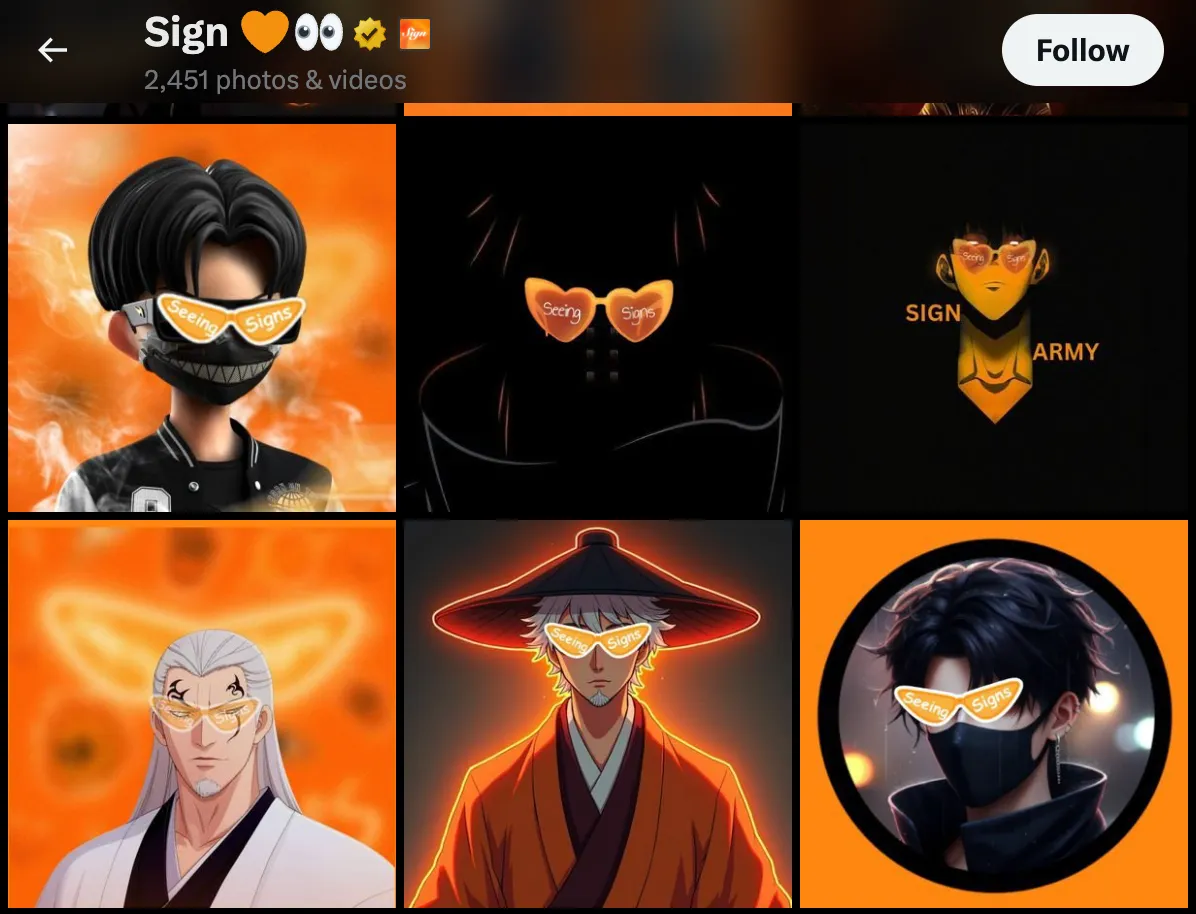
Source: X
The orange color adopted by the community has gone beyond a brand element and evolved into a cultural code. This color that symbolizes energy and passion not only injects vitality into the group, but also forms a visual identity through "SignGlasses".
On the X platform, users can join the community by simply adding an orange background or sunglasses elements, without having to completely change their personal brand image. This low-threshold design encourages spontaneous participation, which not only strengthens group identity but also promotes organic growth of the community.
2.2 Fair Incentives: Soul-Bound Token System

Sign’s second biggest advantage is its innovative Soul Bound Token (SBT) system. This non-transferable token system is divided into four categories, focusing on rewarding substantive contributions rather than superficial data (such as the number of posts or likes), ensuring that recognition comes from real value creation rather than transaction acquisition.
2.3 Continuous operation: 14,500 posts and 560 hours of voice interaction

Source: Sign
The ultimate success factor is continuous communication and activity. Sign has proven its enthusiasm with more than 14,500 posts and more than 560 hours of X Space operation time.
The most notable feature is that the project's official X-platform presence is not centralized in the @sign account, but is operated by a community account. This structure allows new users to first encounter the project through community-driven content, and to gain a preliminary understanding of Sign's culture and values before exploring the core mechanisms.
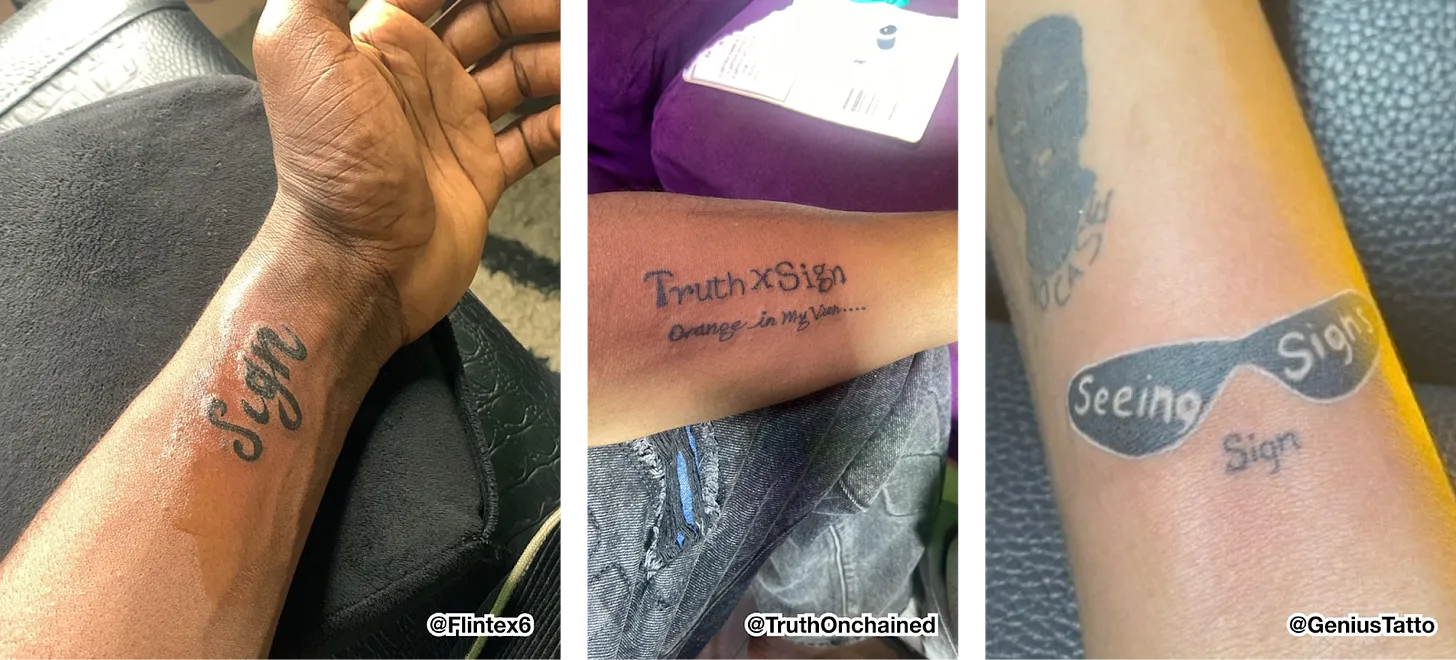
Source: X
Through these communication strategies, Sign has fostered a self-run community of over 50,000 members, with a sense of belonging so deep that some members have tattooed the Sign logo on their bodies—an act of loyalty that clearly reflects the cultural influence of the project.
3. Fundamentals: TokenTable’s performance support
Community power alone is not enough, long-term development requires product support and a clear vision. In 2024, Sign achieved $15 million in revenue through the token distribution platform TokenTable - this is rare in the Web3 field, providing a solid foundation for community development.
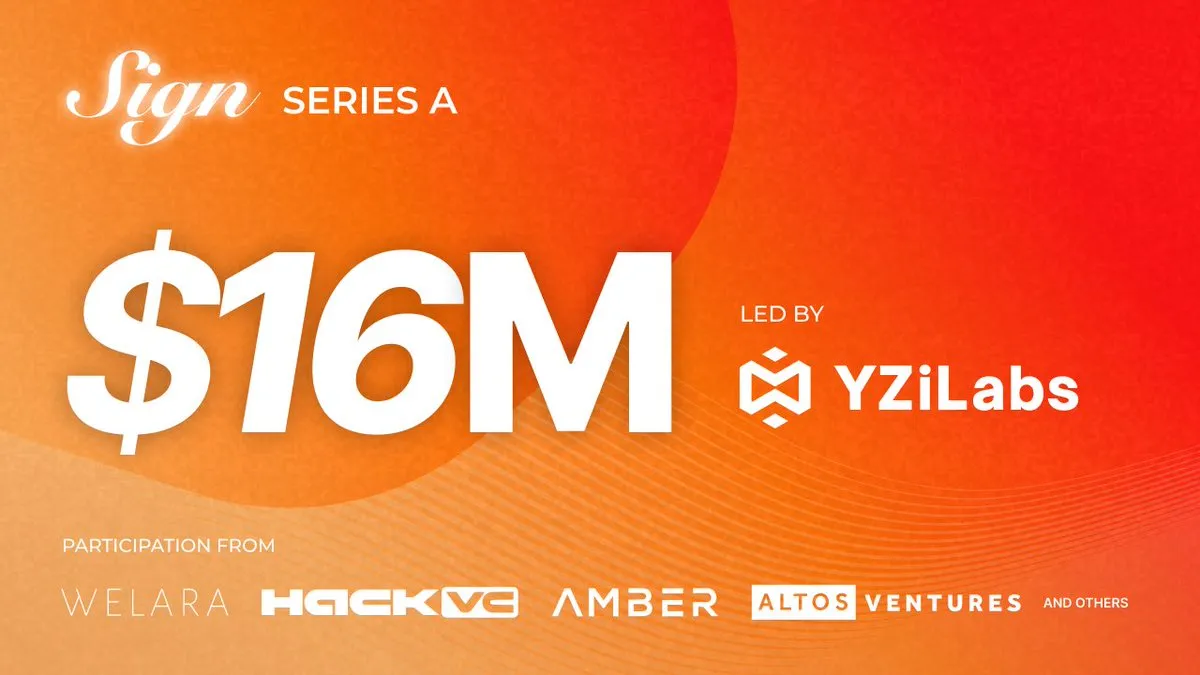
Source: Sign
This achievement has won the favor of capital: Sign has raised a total of US$28 million, including a US$12 million seed round and a US$16 million Series A round led by YZi Labs led by CZ in January 2025.
It is worth noting that Sequoia Capital’s three branches in the United States, China, and India/Southeast Asia jointly participated in the seed round. Sequoia usually only invests through a single regional branch, making Sign a rare exception. The cross-regional participation reflects the market’s broad confidence in Sign’s global potential.
3.1 Current Status of TokenTable: Web3 Version of Goldman Sachs
TokenTable positions itself as the Goldman Sachs of Web3. Just as Goldman Sachs manages stock issuance, investor introduction and market making in traditional finance, TokenTable serves as the core infrastructure for token issuance, distribution and liquidity management in the blockchain ecosystem.
The complexity and risks of token operations explain the criticality of such services to the Web3 ecosystem: first, professional knowledge is required to write and audit the smart contract code for token issuance; second, there are technical difficulties in distributing tokens to tens of thousands or even millions of users, and minor errors may lead to significant losses; third, managing the token lock-up plans of investors and team members requires transparency and precision, and manual operations are prone to errors or misconduct.
TokenTable addresses these challenges by providing standardized infrastructure, allowing project teams to focus on token economics and product development rather than operational risk.
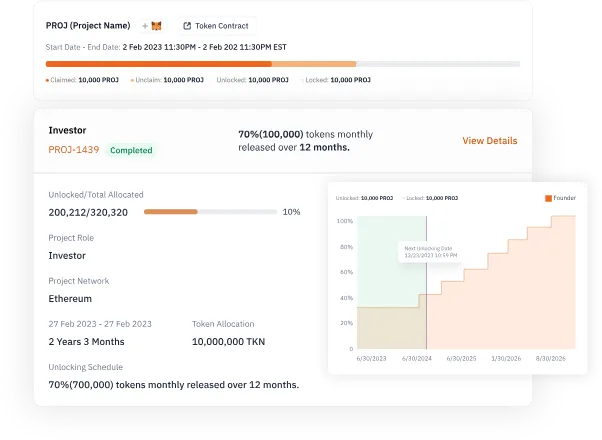
Source: Sign
Token airdrop management : supports automatic distribution of tokens to community users. For example, Kaito airdropped tokens to more than 100,000 users through the platform;
Token unlocking management : Use smart contracts to schedule token unlocking for investors or team members. Projects such as Starknet, Dogs, and Zetachain use TokenTable’s Unlocker feature to make this process transparent.
OTC matchmaking : Facilitates large transactions by transferring withdrawal rights for tokens that are still locked up. This is similar to direct sales of real estate - allowing large amounts of tokens to change hands safely without causing price fluctuations on centralized exchanges.
The client matrix includes Starknet, ZetaChain, DOGS, Mocaverse and TON ecosystem projects (such as Notcoin and GAMEE). In the TON ecosystem alone, TokenTable has distributed more than $2 billion in assets to 40 million users.
3.2 TokenTable’s 2025 Plan
TokenTable's main income comes from airdrop claim fees and OTC service fees. So far, the platform has processed more than $4 billion in token airdrops and unlocking, connecting more than 40 million users and investors.
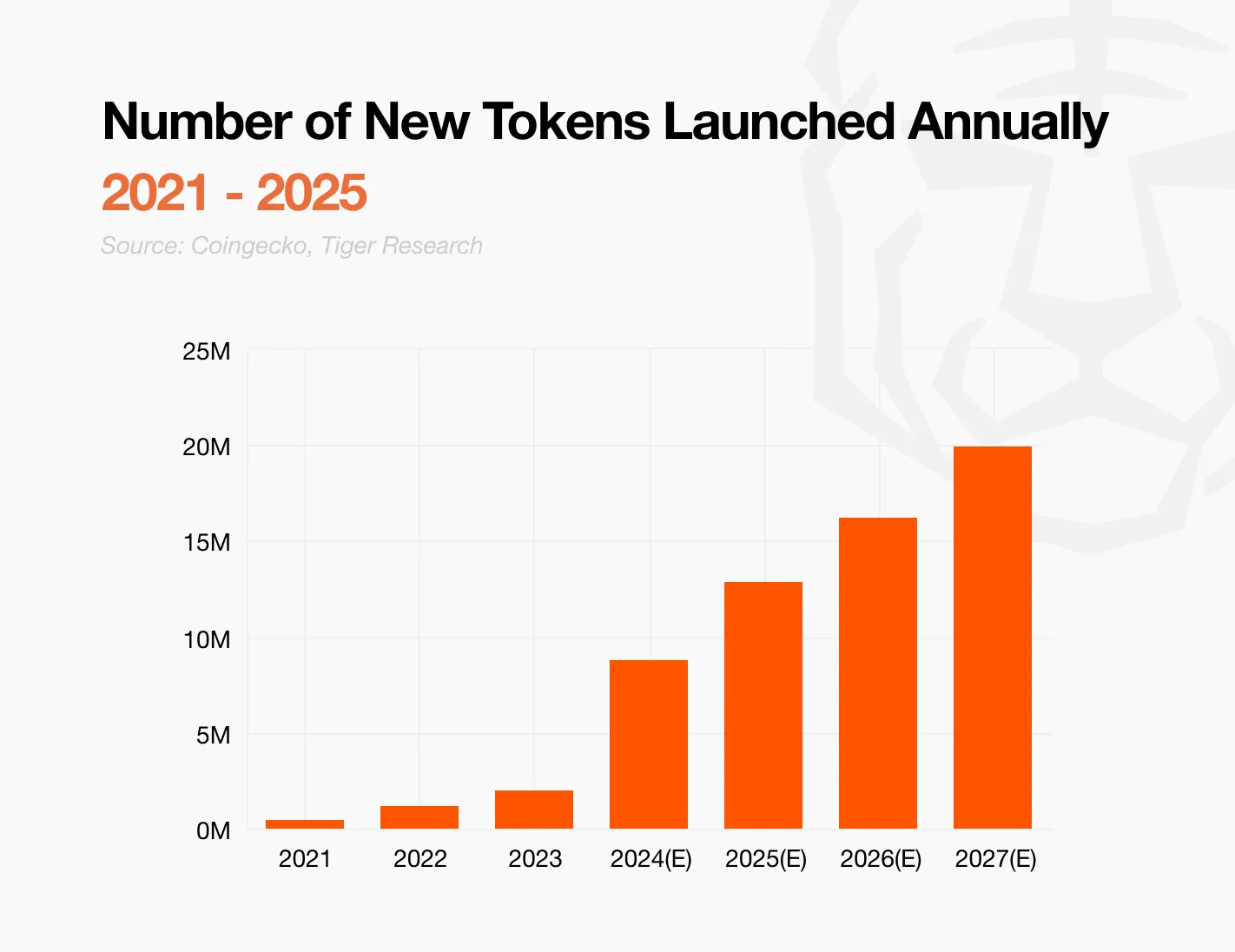
Source: Sign
Market demand is not limited to large projects. With the rise of token launch platforms, the number of small Web3 projects is growing rapidly. It is expected that 1.9 million projects will enter the market by 2027 - most of which will conduct airdrops or require structured token management. Therefore, TokenTable's potential customer base will expand significantly in the next few years.
TokenTable Lite : A simplified service for projects with less than 100,000 users. No approval process required, with an intuitive UI and streamlined setup process, suitable for creating and distributing meme coins, fan tokens, or AI proxy tokens;
TokenTable Dashboard : An investor transparency tool that provides real-time on-chain data on token allocation and distribution plans. The dashboard shows the distribution of tokens among stakeholders, exchanges, and wallets - information that is usually beyond the scope of the project white paper;
FutureToken technology : an upgraded derivative tool that improves the existing OTC trading model. It not only transfers the right to withdraw cash, but also creates standardized financial instruments based on locked tokens and trades them freely in the secondary market. This is similar to converting apartment lease rights into securities and trading them on the stock exchange, thereby improving investor protection, reducing information asymmetry and enhancing secondary market liquidity.
These product expansions are designed to support broader adoption, lower barriers to entry for new projects, and open up additional revenue streams. With a loyal community and a scalable business model, Sign has laid the foundation for long-term growth.
4. Vision: Building Trust Infrastructure Sign Protocol
Sign is currently expanding its focus from TokenTable to a broader identity verification system. While TokenTable effectively connects token distribution and investors, it faces a key limitation: the lack of association between digital wallet addresses and real user identities.
This disconnect makes it difficult to address issues such as Sybil attacks. If wallets can be reliably linked to real individuals, the use of multiple accounts to claim airdrops can be detected and prevented. Current efforts rely on analyzing wallet interactions to infer suspicious behavior. Although blockchain systems are designed to operate without trust, it is still necessary to understand the entity behind the address in scenarios such as airdrop distribution or governance.
Recognizing this challenge, Sign developed the Sign Protocol, a trust system designed to enable easy and reliable identity authentication across physical and digital spaces. At its core is the concept of "attestation": digital confirmation and on-chain recording of the authenticity of specific information or statements, allowing other parties to verify at any time.
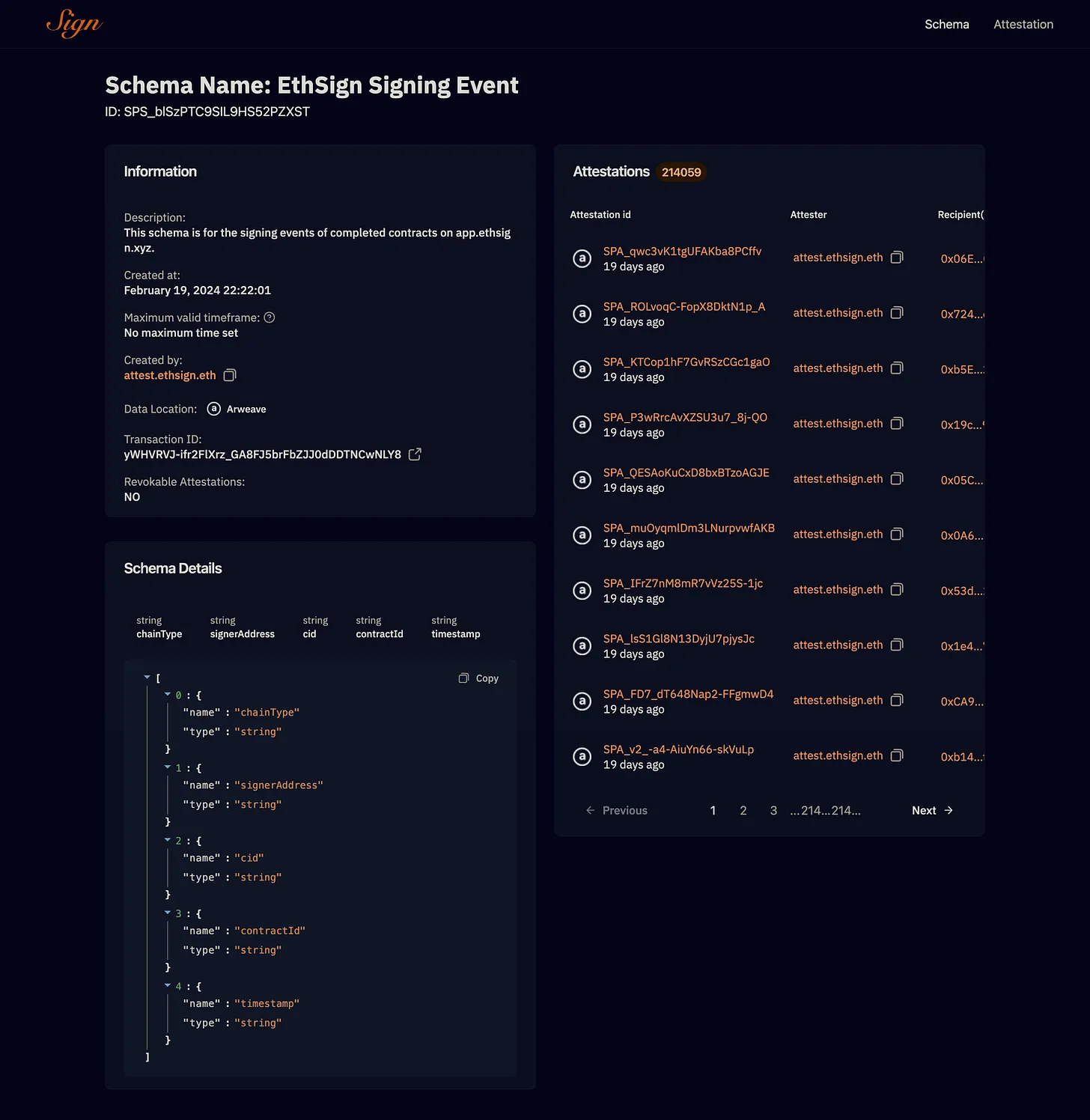
Source: Sign
For example, when a government confirms that someone is a citizen of a particular country, that information can be digitally signed and recorded on-chain. Once stored, other institutions and services can easily verify it. Sign Protocol organizes these certifications using standardized templates called "Schema" - similar to how passports or ID cards use a unified format to manage identity data.

Source: Sign
The system significantly improves the user experience. Instead of repeating the KYC process on multiple platforms, users can reuse the certification created by Sign Protocol. While the initial use cases focus on airdrop qualifications and Sybil attack prevention, the framework opens up possibilities for a wider range of areas that require verification of identity or qualifications, especially RWA and CBDC.
RWA is the concept of converting physical assets such as real estate or stocks into tradable tokens on the blockchain. In this field, regulatory compliance is crucial. The verified investor qualifications managed by Sign Protocol can simplify the investment process. As real assets are put on the chain, corresponding DeFi applications are expected to grow naturally.
CBDC distribution is another key use case. When the government needs to distribute digital currency on a large scale, combining TokenTable's large-scale distribution capabilities and Sign Protocol's authentication infrastructure can achieve efficient and secure deployment.
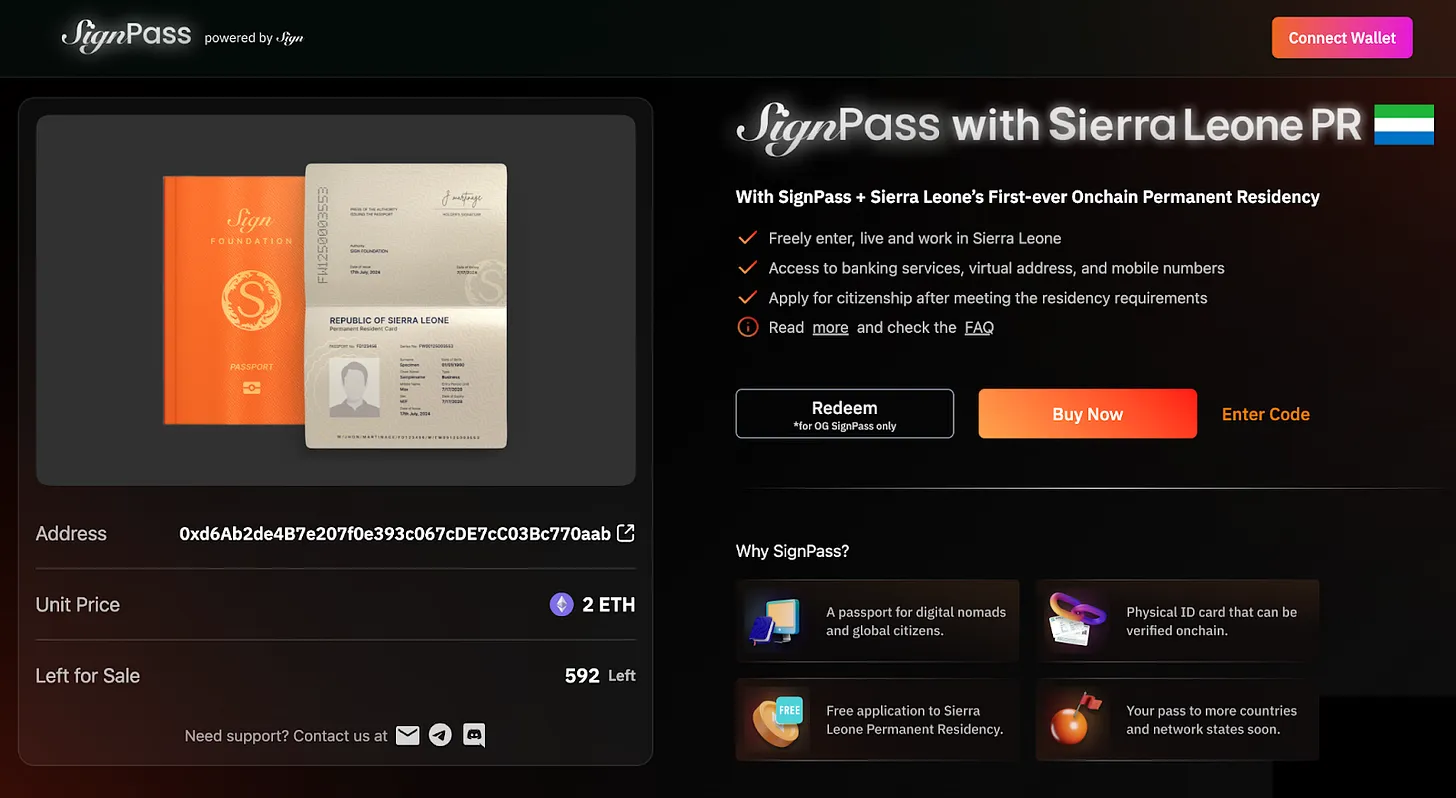
Source: Sign
However, for Sign’s certifications to develop into true trust infrastructure, they must go beyond simple on-chain statements—they need to be recognized by real-world institutions and systems. To this end, Sign has made substantial progress:
In Sierra Leone, the team developed a blockchain-based digital ID card, issuing the world’s first on-chain verifiable physical ID card;
In Ras Al Khaimah, UAE, we are working with the government to use blockchain to automate government processes;
In partnership with Cypher Capital and RAK DAO, we are launching a 10-year residency visa program for Web3 entrepreneurs.
These milestones prove that Sign is not just building technology infrastructure - it is actively creating real-world trust.
Ultimately, Sign is more than just a verification tool. It is laying the foundation for future architecture for the vision of "defining trust and making it programmable." As the Web3 ecosystem matures, this basic capability will become increasingly indispensable.
5. Sign: The trinity of community, fundamentals and vision
Sign is a model project in the Web3 ecosystem that successfully builds community and business foundations in parallel. Unlike most token-driven projects that raise funds first and then develop products, Sign expands its ecosystem around TokenTable, a product with a proven revenue model, demonstrating an "execution first" strategy.
While Sign Protocol is still in its early stages, the team has demonstrated strong operational capabilities through government partnerships, including ID and crypto card development. These achievements go beyond abstract vision statements to become concrete indicators of feasibility and long-term sustainability.
At the same time, Sign faces the challenge of expanding the ecosystem with internal resources alone. To turn the current community enthusiasm into sustained growth, the project needs to attract external builders with the same goals. This requires the development of a strategy to expand the ecosystem on a strong cultural foundation, so that third-party services can develop on top of the Sign Protocol.
Despite the obstacles, Sign is widely seen as a project with significant long-term potential, supported by its commercial progress and loyal community. If the team can build on the success of TokenTable and expand the Sign Protocol into a wider ecosystem, it may provide a new blueprint for the sustainable development of Web3.
















